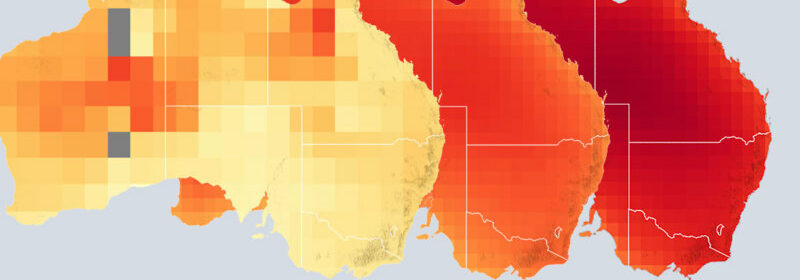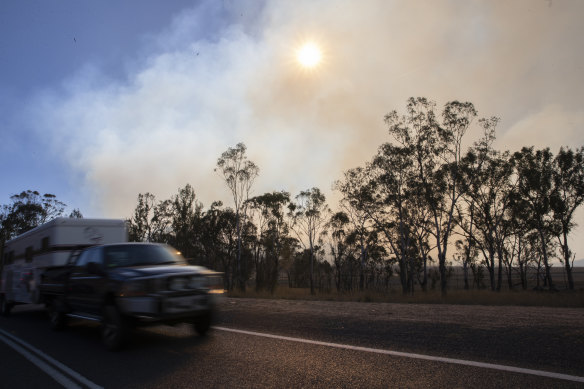Liver cancer rates are surging in Australia – and climate change could be to blame

Save articles for later
Add articles to your saved list and come back to them any time.
Key points
- Aflatoxin, a toxin produced by the Aspergillus fungus, is an established cause of liver cancer.
- Queensland University of Technology researchers argue aflatoxin could explain the much higher risk levels for liver cancer in Australia’s warm, humid north.
- Programs to cut the incidence of hepatitis may take decades to significantly lower cancer rates.
Australia’s surging rate of liver cancer – up 306 per cent since 1982 – could be partly driven by climate change spurring the growth of dangerous fungi.
Aflatoxin, a toxin produced by the Aspergillus fungus, is a well-established cause of liver cancer. Warming temperatures around the globe are encouraging Aspergillus and many other deadly types of fungi to spread.
Researchers argue that increasingly warmer temperatures in Australia’s north are contributing to higher rates of liver cancer.Credit: AAP
Queensland University of Technology researchers argue in a paper published earlier this year that aflatoxin could explain the much higher risk levels for liver cancer in Australia’s warm, humid north compared with cooler regions.
“As you get warming, as you get higher humidity, the peanut mould that produces the aflatoxin is going to be more abundant. No question. And aflatoxin is really bad news,” said Professor George Yeoh, who heads a liver cancer research lab at the Harry Perkins Institute of Medical Research and was not involved in the research. “They have a point.”
What makes the liver cancer story particularly striking is that it is an outlier. Rates of other cancers are growing slowly or even going backwards.
And the growth comes in the face of serious efforts to stamp it out. A vaccine for hepatitis B, one of the major causes of liver cancer, was introduced for children in 2000, and coverage rates are close to 97 per cent.
That’s what drew the interest of QUT Professor Wenbiao Hu and his team.
“We found liver cancer increasing. But we couldn’t find a reason,” he said.
To isolate potential causes, the team compared the incidence of liver and lung cancer. The two cancers share several risk factors, such as alcohol, smoking and diabetes, meaning rates should be similar, Hu said.
Plotted on a map, the difference is stark. Australia’s tropical north has a relatively higher risk of liver cancer than other regions.
“Aflatoxin-producing fungi are abundant in hot and humid regions, especially northern Australia. And we find liver cancer risk is higher in northern Australia,” said co-author Ting Gan.
Aflatoxin, which is mainly produced by the Aspergillus mould and often found in peanut and corn crops, causes mutations in liver cells, leading to cancer, Yeoh said.
The mould thrives in warmer temperatures and under heat stress and drought. Modelling suggests the climate crisis will substantially increase its range. And there is some evidence globally linking hot, humid environments to higher liver cancer rates.
“It’s certainly possible,” said Dr Kwang Yee, a University of Tasmania researcher who has published studies on liver cancer epidemiology. “There are a lot of unexplained factors. Certainly, there are questions of whether it’s related to an environmental toxin.”
However, independent scientists were cautious about a firm link, as other risk factors are also at play.
Aflatoxin levels are regulated in Australia, with food and crops regularly tested.
And programs to cut the incidence of hepatitis, such as the vaccination rollout, may take decades to significantly lower cancer rates.
“It’s fascinating, and I think we really should follow up on it and do some work looking at aflatoxin,” said Dr Barbara de Graaff, a Menzies Institute researcher who has studied liver cancer rates.
“But the one thing the authors did not consider is up in the regions where they are finding very high rates of liver cancer, they have got a different genetic variant of hepatitis.”
Indigenous Australians, who make up about 30 per cent of the Northern Territory’s population, face an aggressive variant of hepatitis that may be driving the disease’s growth.
And broader trends may also be at play. Given obesity and diabetes are major risk factors for liver cancer, the obesity crisis is expected to push up liver cancer rates around much of the world.
“Australians are indulging in very, very poor lifestyle practices. We bring it on ourselves,” said Yeoh.
The Morning Edition newsletter is our guide to the day’s most important and interesting stories, analysis and insights. Sign up here.
Most Viewed in National
From our partners
Source: Read Full Article
